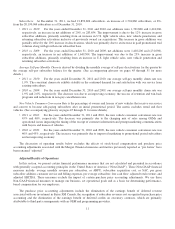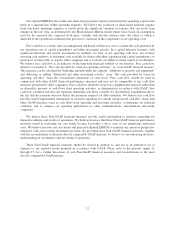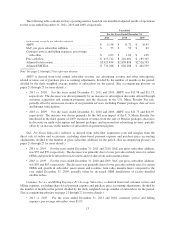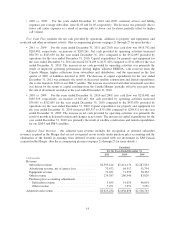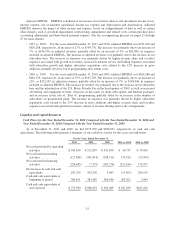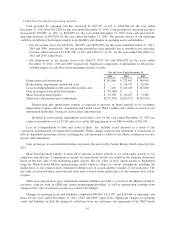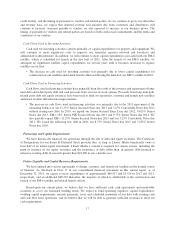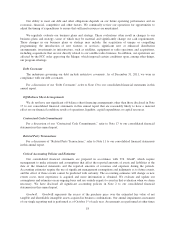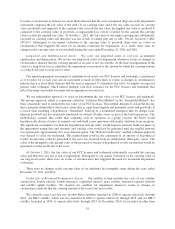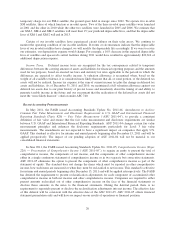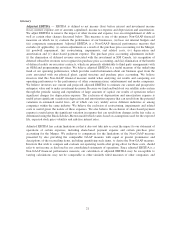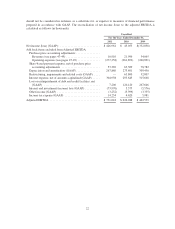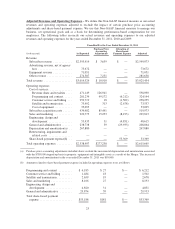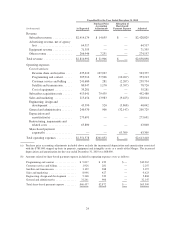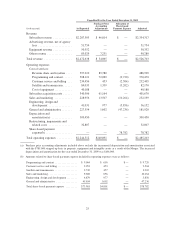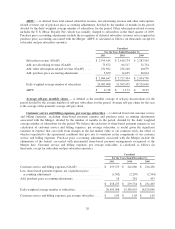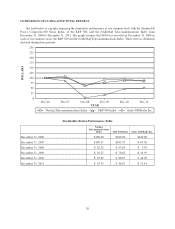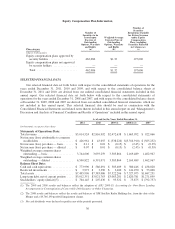XM Radio 2011 Annual Report Download - page 77
Download and view the complete annual report
Please find page 77 of the 2011 XM Radio annual report below. You can navigate through the pages in the report by either clicking on the pages listed below, or by using the keyword search tool below to find specific information within the annual report.
Glossary
Adjusted EBITDA — EBITDA is defined as net income (loss) before interest and investment income
(loss); interest expense, net of amounts capitalized; income tax expense and depreciation and amortization.
We adjust EBITDA to remove the impact of other income and expense, loss on extinguishment of debt as
well as certain other charges discussed below. This measure is one of the primary Non-GAAP financial
measures on which we (i) evaluate the performance of our businesses, (ii) base our internal budgets and
(iii) compensate management. Adjusted EBITDA is a Non-GAAP financial performance measure that
excludes (if applicable): (i) certain adjustments as a result of the purchase price accounting for the Merger,
(ii) goodwill impairment, (iii) restructuring, impairments, and related costs, (iv) depreciation and
amortization and (v) share-based payment expense. The purchase price accounting adjustments include:
(i) the elimination of deferred revenue associated with the investment in XM Canada, (ii) recognition of
deferred subscriber revenues not recognized in purchase price accounting, and (iii) elimination of the benefit
of deferred credits on executory contracts, which are primarily attributable to third party arrangements with
an OEM and programming providers. We believe adjusted EBITDA is a useful measure of the underlying
trend of our operating performance, which provides useful information about our business apart from the
costs associated with our physical plant, capital structure and purchase price accounting. We believe
investors find this Non-GAAP financial measure useful when analyzing our results and comparing our
operating performance to the performance of other communications, entertainment and media companies.
We believe investors use current and projected adjusted EBITDA to estimate our current and prospective
enterprise value and to make investment decisions. Because we fund and build-out our satellite radio system
through the periodic raising and expenditure of large amounts of capital, our results of operations reflect
significant charges for depreciation expense. The exclusion of depreciation and amortization expense is
useful given significant variation in depreciation and amortization expense that can result from the potential
variations in estimated useful lives, all of which can vary widely across different industries or among
companies within the same industry. We believe the exclusion of restructuring, impairments and related
costs is useful given the nature of these expenses. We also believe the exclusion of share-based payment
expense is useful given the significant variation in expense that can result from changes in the fair value as
determined using the Black-Scholes-Merton model which varies based on assumptions used for the expected
life, expected stock price volatility and risk-free interest rates.
Adjusted EBITDA has certain limitations in that it does not take into account the impact to our statement of
operations of certain expenses, including share-based payment expense and certain purchase price
accounting for the Merger. We endeavor to compensate for the limitations of the Non-GAAP measure
presented by also providing the comparable GAAP measure with equal or greater prominence and
descriptions of the reconciling items, including quantifying such items, to derive the Non-GAAP measure.
Investors that wish to compare and evaluate our operating results after giving effect for these costs, should
refer to net income as disclosed in our consolidated statements of operations. Since adjusted EBITDA is a
Non-GAAP financial performance measure, our calculation of adjusted EBITDA may be susceptible to
varying calculations; may not be comparable to other similarly titled measures of other companies; and
21


